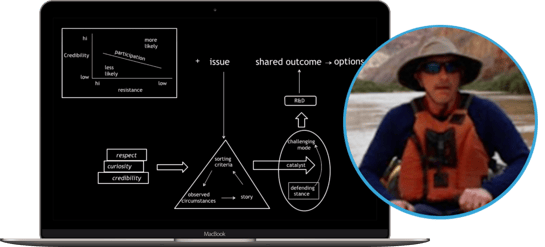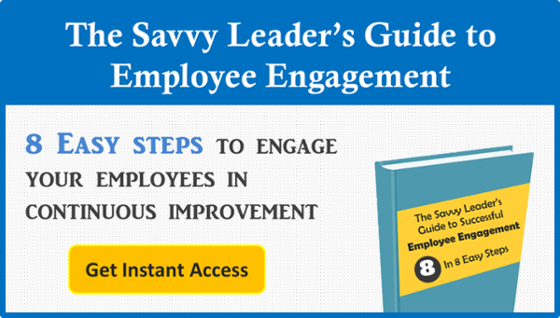 Introducing new topics, standards, and philosophies is difficult. It can be even more difficult when you face resistance when introducing these new thoughts. In a recent KaiNexus webinar, our Mark Graban paired with Mark Jaben to explain the science behind resistance to change. Mark Jaben, MD, has over thirty years experience in community emergency medicine in the US and New Zealand.
Introducing new topics, standards, and philosophies is difficult. It can be even more difficult when you face resistance when introducing these new thoughts. In a recent KaiNexus webinar, our Mark Graban paired with Mark Jaben to explain the science behind resistance to change. Mark Jaben, MD, has over thirty years experience in community emergency medicine in the US and New Zealand.
We’ll tell you about the highlights of this webinar, but make sure you check out the entire thing here.
The Science Behind Resistance to Change [Free Webinar on Demand]
What’s the Deal with Resistance?
During the implementation of a new process, you will often have to deal with resistance from staff members. You should even want to see some form of resistance. Facing resistance helps to avoid misguided decisions and helps craft ideal change in your organization.
Resistance often comes in the face of change. One mistake that many people make when facing change is that thinking that change is a problem. Change is not a problem; change is a dilemma. The difference between changes and dilemmas is that dilemmas do not go away like problems do. Dilemmas are like balancing on a tightrope. It is a balance of the benefit vs the risk of harm. A dilemma requires strategy to leverage balance points. If this strategy is done well, it results in the next step and allows you to continue moving forward on the journey to accomplish ideal change.
To move forward and accomplish ideal change, you need to address issues and find out what works, but you also need to make sure that it is a workable change. Without a workable change, people will not accept it. They need to believe that the change will be more successful than what they’re currently doing, or else they will reject this change.
If they don’t believe the change will be successful for them, then why shouldn’t they resist? Resistance is the judgment made by the brain that the proposal for change makes less sense than what they’re currently doing. This judgment is only partly based on reason, but it can also be based on missing data. To dig deeper inside the how the brain makes judgments, check out the full-length webinar.
Perspectives and Missing Data
Everyone has different perspectives on what matters to them. All of us see the world in our own way. Each of us thinks that we know what the change should be implemented. However, Mark Jaben says that but we are all working to make changes when we have incomplete data. For example, Jaben believes that physical meetings are unproductive because the criteria that are looked at in those meetings is different than the criteria that are looked at on the front lines. There is missing data involved in the switch from the front line to the meeting room.
When faced with a decision, first the brain interprets issues and then makes a choice. These issues drive the brain to its desired outcome. Lastly, the brain then reviews its options at hand and makes a choice (hopefully the choice is an ideal change).
The brain interprets situations and issues, but not actual individual circumstances. This was found out in the split brain experiments during the 1940s. During the experiment, scientists split the brain down the middle. Through the experiment, scientists found out that each side of the brain has different functions. They also found out brain makes up a story to fit incomplete facts by gathering data through senses and then interpreting that data, including just enough data to decide how to act and crafting a story around it.
The regardless of the accuracy of this story that has been crafted, the brain prefers to defend rather than change it. It is the prefrontal cortex that decides to accept or reject new choices and changes - and when it is overwhelmed it completely rejects new ideas, leaving out key data regardless of how vital it is.
An example of this could be that evidence shows that Lean and continuous improvement works, but a doctor’s prefrontal cortex so overwhelmed that he dismisses the idea outright because it cannot handle any more data. How do we get work with this resistance instead of against it?
The Wrong Way to Work with Resistance
Many times leaders try to intervene at the choice stage of the decision. They hope for an ideal change and aim for buy-in. Instead of buyers, what you need are investors. Investors work with you to create something that everyone has a stake in. Focus in at the desired outcome stage and create the conditions that make people willing to accept and invest in. Turn your desired outcome into a shared outcome for everyone.
Resistance has many different faces. Resistance can be obvious or it can be subtle. It may be as simple as a “no” or it can even be an “I'll try," which can sometimes sound positive. The cause of this is a lack of agreement on either purpose, process, or priorities. It is important to discover the root of these disagreements in order to solve the dilemma.
The Best Way to Work with Resistance
It is important to deal with resistance with respect. You need to respect staff member's fears of failing or their fears of not being able to accomplish their tasks. Respecting staff members can help break down some barriers of resistance. You can also use curiosity to discover the root of the disagreements. This curiosity needs to be genuine and cannot be faked. Fake curiosity is easy to see through and it is easy to lose respect because of it. Lastly, leaders need to show credibility. A good leader should know that credibility can trump reason and staff will follow leaders that they find credible, even if they may at first disagree.
If we can learn one thing, it that we need to use resistance to learn where the biggest obstacles are. Learning where the obstacles are can help to resolve issues and roadblocks in and help you implement your ideal change in your organization.
Interested in more? Check out 5 Employee Engagement Ideas for Creating a Culture of Continuous Improvement.




Add a Comment